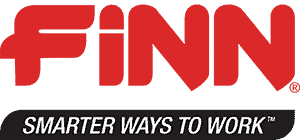Fill in the hydroseeding cost calculator chart below to determine the size of your project and estimate average cost to hydroseed.
How Much Does Hydroseeding Cost?
All hydroseeding costs are not created equal — hydroseeding cost is a function of several key factors that impact the final amount you can expect to pay for your unique project. For example, some of the things to consider when estimating how much hydroseeding costs should include:
- The size of your project (in acres or square feet)
- Materials used (including seeds as well as bonding agents, tackifiers, fertilizers, etc.)
- Cost of equipment and rental
Factors Affecting the Cost of Hydroseeding
In order to get an accurate estimate of your project, you’ll need to measure your yard or project site and do some research to find out how much materials cost in your area. You’ll also need to factor in hydroseeder rental costs in your area — it’s a good idea to look into several rental companies and see what kinds of machines are available based on what’s right for your project.
Once you know your yard size and have an idea where you’ll get your hydroseeder, you’ll have a much more accurate understanding of how much hydroseeding costs will run for your project, and in your region.
Additionally, consider the following factors affecting the cost of hydroseeding, as material and consumable cost can add up to a large percentage of your hydroseeding budget:
- Grass Seed
- HydroMulch
- Fertilizer
- Tackifier – if needed
- Additives – if needed
Be sure to use your yard size to gauge how much of each material type you will need, so you can make sure you have enough to cover your project area.
The Average Cost of Hydroseeding
While many of these factors can impact how much hydroseeding costs, we can, and do, use averages to estimate the range you can expect to pay for a project based on median prices for materials and average lawn sizes.
While these estimations can be useful to understand the financial ball park, it still comes down to the details that will ultimately determine how much your hydroseeding costs will be. For more information about average hydroseeding costs, or to learn more about Finn Hydroseeding, contact us today.
